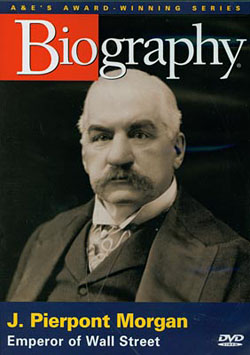Clash of the Two Americas Volume 2: Open vs Closed Systems Collide
By Matthew Ehret (2021)a
Purchase link: https://canadianpatriot.org/untold-history-of-canada-books/
Book Review
In Volume 2, Ehret’s narrative about the political clash between America’s Anglophile pro-colonization elite and pro-international cooperation forces who opposed them continues into the 20th century.
The second volume begins with a brief discussion of Gilpin’s Landbridge, proposed by Lincoln advisor William Gilpin (who Lincoln appointed as Colorado’s first governor in 1861). In 1890 Gilipin published Cosmopolitan Railway: Compacting and Fusing Together All the World’s Continents, calling for a Tunnel to be built between Alaska and Siberia connecting Russia’s Trans-Siberian Railroad [1] with a North American transcontinental rail network. This proposal arose in part out of a strategy first put forward by Lincoln’s Secretary of State William Seward, General (and later president) Ulysses Grant and Senator Charles Sumner. The surprise purchase of Alaska from the Russians in 1867 was the first step in this venture.

According to Ehret, most of British foreign policy in the early 20th century was aimed at disrupting the strong US-Russia-German alliance supported by Lincoln, Seward, Grant, Gilpin and Sumner.
For example
- The 1902 Anglo-Japanese treaty which resulted in the disastrous Japan-Russian war (in which Anglophile US banker Jacob Schiff financed the Japanese), which substantially weakened Russia’s pro-US Romanov rulers.
- According to Ehert, Britain’ primary purpose in instigating World War I was to break up the continuing US-German-Russian-Ottoman alliance committed to international rail development (a major threat to Britain’s monopoly on maritime trade).
- The substantial support the British/Wall Street banking establishment provided Russia’s two revolutions in 1905 and 1917. According to Schiff’s grandson, Schiff funded the Bolsheviki revolution to the tune of $20 million. Prominent member of Lloyd George’s war cabinet Lord Alfred Milner also contributed 21 million rubles to the Bolshevik cause.
- The collaboration of British banks and Wall Street banks and corporates to finance the rise of Hitler.[2] Prescott Bush (grandfather of George W) bailed out the German Nazi party when it went bankrupt and collapsed in 1932.[3] J P Morgan and Henry Luce, founder and owner of Time Magazine, also helped fund both Hitler and Mussolini, while the Rockefeller and Carnegie foundations funded the Nazis eugenics program, including the experiments Dr Mengele conducted on concentration camp victims.
The book includes some fascinating details about Franklin D Roosevelt’s presidency that are rarely covered in high school history classes. Immediately on taking office, anti-colonist FDR immediately declared war on Wall Street, with his Pecora Commission sending dozens of bankers to prison. He only agreed to support Europe during World War II on condition the European powers surrender their colonies at war’s end. However he ran into major resistance from Churchill 1) when he and Eisenhower tried to open a second front in Western France after Hitler invaded Russia in June 1941 and when 2) FDR (seeking to prevent a dangerous nuclear arms race) tried to bring the Soviets into the secret US-British project to develop an atomic bomb.
Ehert also devotes a chapter to President John F Kennedy, an anti-colonist like Franklin, Lincoln and Roosevelt, and to the role of Anglophile CIA elements (and even British intelligence agents in Montreal) in his assassination.
My favorite part of the book concerns extensive evidence Ehert has compiled revealing the alleged 1989 Tienanmen Square massacre was actually a color revolution funded by George Soros and the CIA-sponsored National Endowment for Democracy.[4] Both Soros and color revolution guru Gene Sharp were in Beijing on June 4, 1989. See George Soros, Gene Sharp and the 1989 Failed Color Revolution in Tiananmen Square and The CIA and Nonviolence
I feel some chapters towards the end of Volume 2 are somewhat one-sided in terms of Ehert’s unconditional embrace of new technological development. At times new technologies can be extremely hazardous to human health, eg our 70-year-old toxic chemical technology which has left us with a global epidemic of chronic diseases.
I’m also skeptical of his high praise of China’s embrace of unrestrained fossil fuel use and nuclear energy. Serious problems with particulate pollution pose (from coal burning a vehicle exhaust) are responsible for serious health problems (in some cases life threatening) for residents of all China’s major cities. Likewise, I don’t believe there is sufficient evidence to conclude China has “solved” the nuclear waste problem by vitrifying it.[5] While transforming nuclear waste to a solid makes it easier to store, the waste still remains radioactive for thousands of years. You also have to wonder whether the massive temperatures (1000° C) required for vitrification lowers the Energy Returned for Energy Invested below the break even point to justify the major investment required.
Finally I’m confused when he writes in one section about global warming being a myth and about the Polar Silk Road made possible by Arctic ice melting.
[1] Which was built with generous US engineering support.
[2] According to Ehret increasing calls by residents of British Columbia for the province to be annexed to the United States (to facilitate the construction of the transcontinental railroad between Oregon and Alaska) put the UK under pressure to unite Canada’s provinces as a dominion under the British king on July 1st 1867.
[3] First documented by journalist George Seldes in Facts and Fascism in 1943.
[4] It’s also significant that Bush was an insider of the US/British banking conspiracy that created the $5.7 billion Wall Street bubble (via an astronomical level of broker loans) and then deliberately crashed the economy by suddenly calling them due. Bush, like others involved the conspiracy, made his fortune by selling his holdings prior to the crash. In 1942, he was found guilt of under the Trading with the Enemy Act and the federal government all the capital assets of his bank, Union Banking.
[5] In vitrification of nuclear waste, the fission products are made solid by being incorporated into molten glass.


